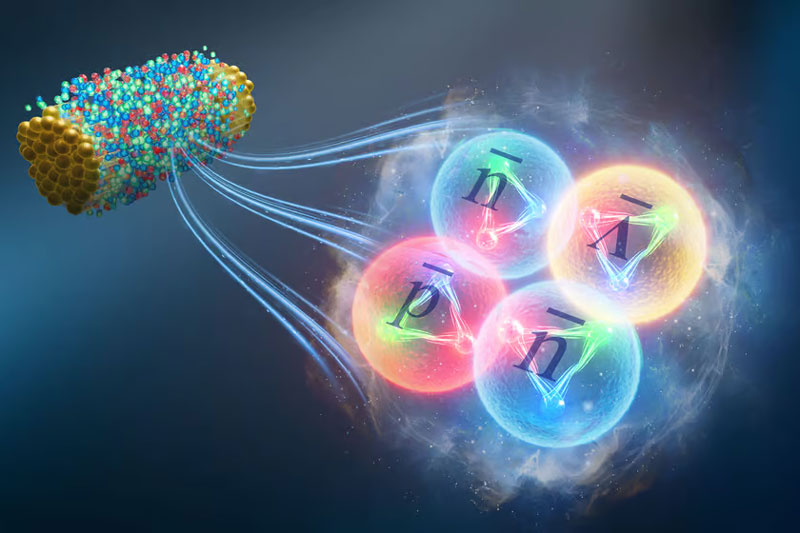An international team of scientists has produced the heaviest antimatter atoms ever created in a collider on Earth. The antihyperhydrogen-4 antisubstance originated from the RHIC facility at Brookhaven National Laboratory. The study was led by Chinese scientists who reported the achievement. This is a step towards new knowledge that will help humanity move forward in its development.

Image source: Institute of Modern Physics, China
The study of antimatter provides approaches to the search for new physics or to explaining the imbalance in the ratio of matter and antimatter that arose shortly after the Big Bang. If there were equal amounts of matter and antimatter, or if they were completely identical except for the sign of charge, then the Universe would not have arisen. There would be mutual annihilation of matter and antimatter with the release of energy. Meanwhile, we observe the material Universe around us, and antimatter, if found in nature, is in extremely rare cases. It is mainly produced in laboratories, including particle collisions in colliders.
Alternatively, an assumption arose that matter and antimatter may differ in properties that are still elusive to our instruments, and not just in charge polarity. This is why it is so important to conduct experiments at colliders, studying all available parameters of antimatter in a wide range of substances. The production of atoms (nuclei) of antihyperhydrogen-4 at the RHIC collider is one of such experiments, making it possible to measure the mass, energy and other properties of this particular antimatter for comparison with ordinary hyperhydrogen-4.
The atoms of antihyperhydrogen-4 obtained as a result of the work of the RHIC collider consist of an antiproton, two antineutrons and an antihyperon. The latter are rare in experiments (like hyperons), but, in fact, they are slightly heavier versions of the antineutron. Hyperons and antihyperons have a very short lifetime – about one tenth of a nanosecond. Therefore, antihyperhydrogen-4 nuclei themselves are not detected on recording equipment. But traces of their decay (tracks) remain, from which the original picture can be restored.
Out of 6.6 billion collisions, only 16 antihyperhydrogen-4 nuclei were confidently identified. This is not much, but it is enough to evaluate their properties. Researchers will continue experiments to collect more data on this antimatter – so far the heaviest that has been obtained at the collider. This will help test our physical theories and, perhaps, indicate a new direction for their development if we can learn something new and unusual about antimatter.